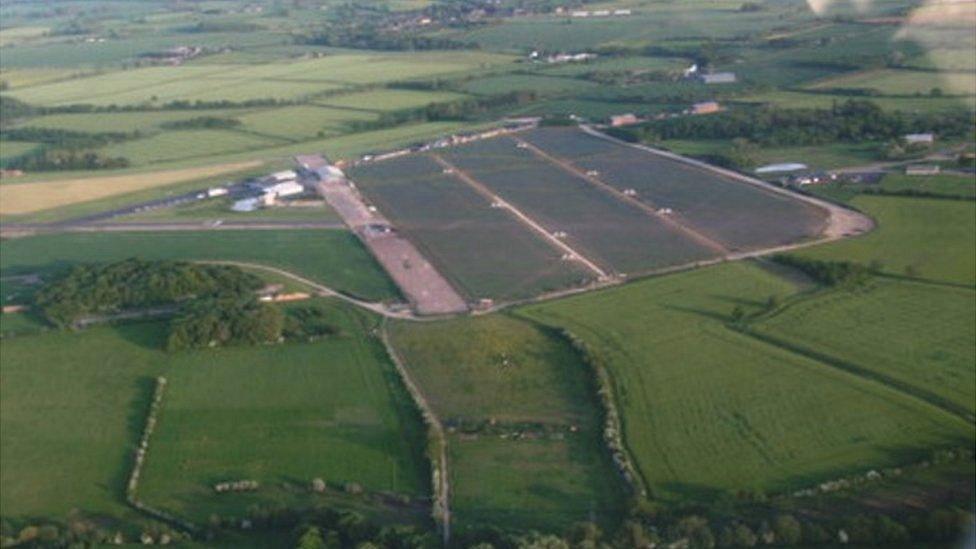Light planes in near miss in sky over Silverstone
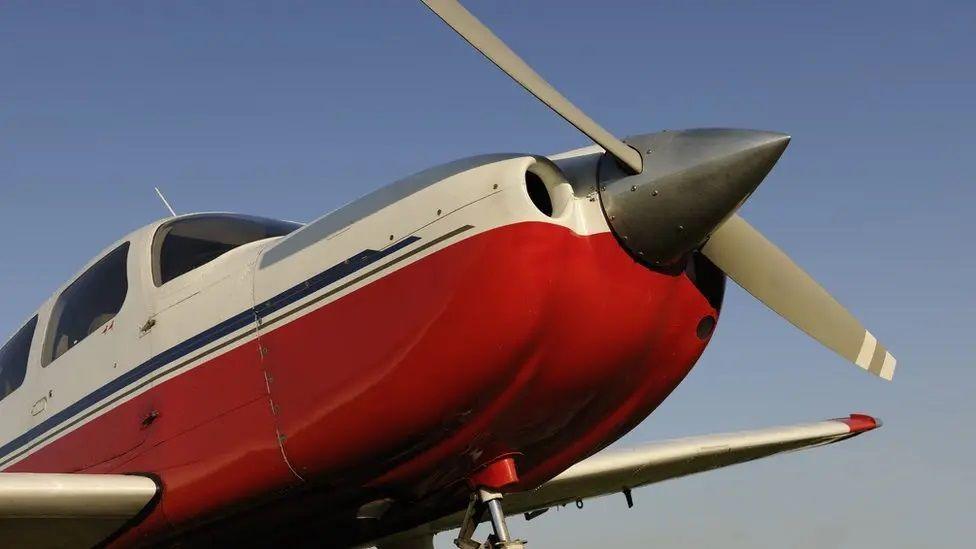
The planes involved were both PA-28 Cherokees, similar to the aircraft pictured
- Published
Two light planes came within 25m (27 yards) of each other in the skies over Silverstone, according to a new investigators' report, external.
One of the pilots said there had been a "high risk" of collision during the incident in November 2024.
Both planes had been involved in training exercises at the time.
The report found that "safety margins [were] much reduced below the norm" during the incident over the Northamptonshire village and racetrack.
The planes involved were both Piper PA-28 Cherokees, a type of aircraft that was introduced in 1960 and is often used for pilot training.
The pilot of the first aircraft, identified as PA-28(1) in the official Airprox report, said his plane had just taken off from Turweston Aerodrome near Brackley and was on its way to Silverstone for a navigation exercise.
At 2,500 feet (762m), the pilot saw a white PA-28 "looming" from the right and "very close".
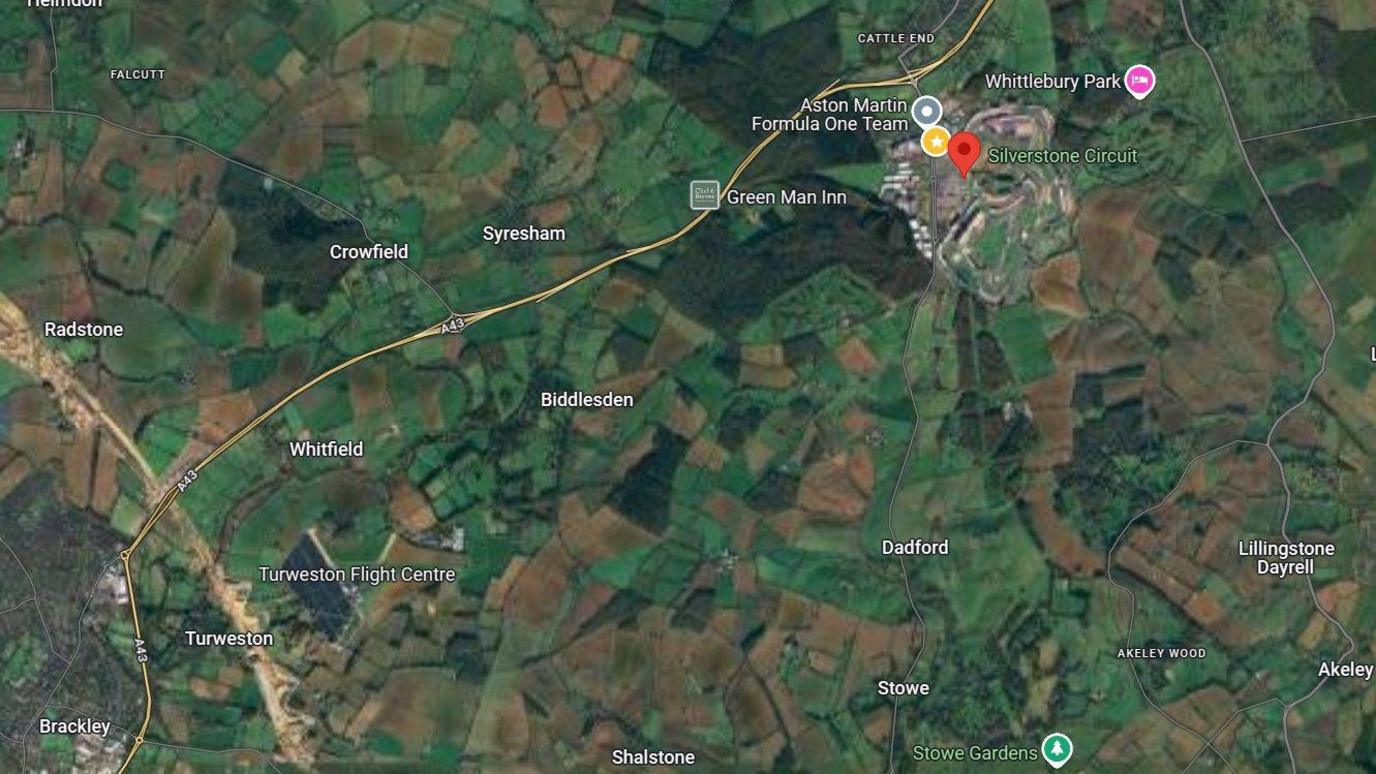
The incident happened 1.5 nautical miles (1.7 miles / 2.8km) west of Silverstone (top right of map)
The report noted that "avoiding action was taken" and the distance between the two planes was estimated to be 25m (27 yards).
The PA-28(1) pilot said the other plane "did not appear to have seen them and made no attempt at avoiding action".
The PA-28(2) pilot said a lookout was conducted and PA28(1) was spotted "on a perpendicular course at a similar altitude".
The pilot "initiated a pitch-up manoeuvre to avoid a potential mid-air collision", and assessed the risk of the two planes hitting each other as "medium".
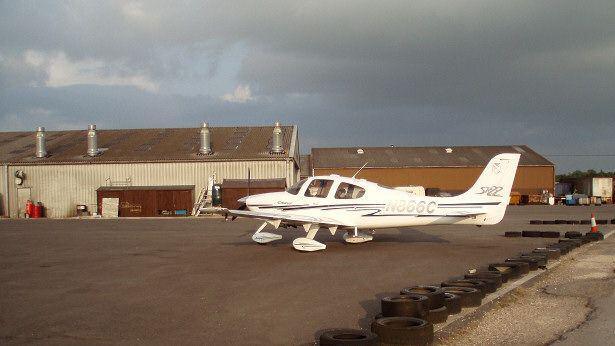
The first plane (PA-28(1)) took off from Turweston Aerodrome near Brackley
In the official report, the Airprox Board found that the PA-28(2) pilot had not told Turweston airfield about its route so aircraft in the area were not warned of its presence.
The board's members said they were "disappointed to observe" that the plane did not have extra electronic equipment fitted which may have detected other aircraft.
The report also found the detection equipment in the PA-28(1) "had not alerted them" to the other plane as it should have done.
The board concluded that "safety had not be assured" and safety margins were "much reduced below the norm and the board assigned a Risk Category B to this event".
Get in touch
Do you have a story suggestion for Northamptonshire?
Follow Northamptonshire news on BBC Sounds, Facebook, external, Instagram, external and X, external.
More stories like this
- Published1 December 2024
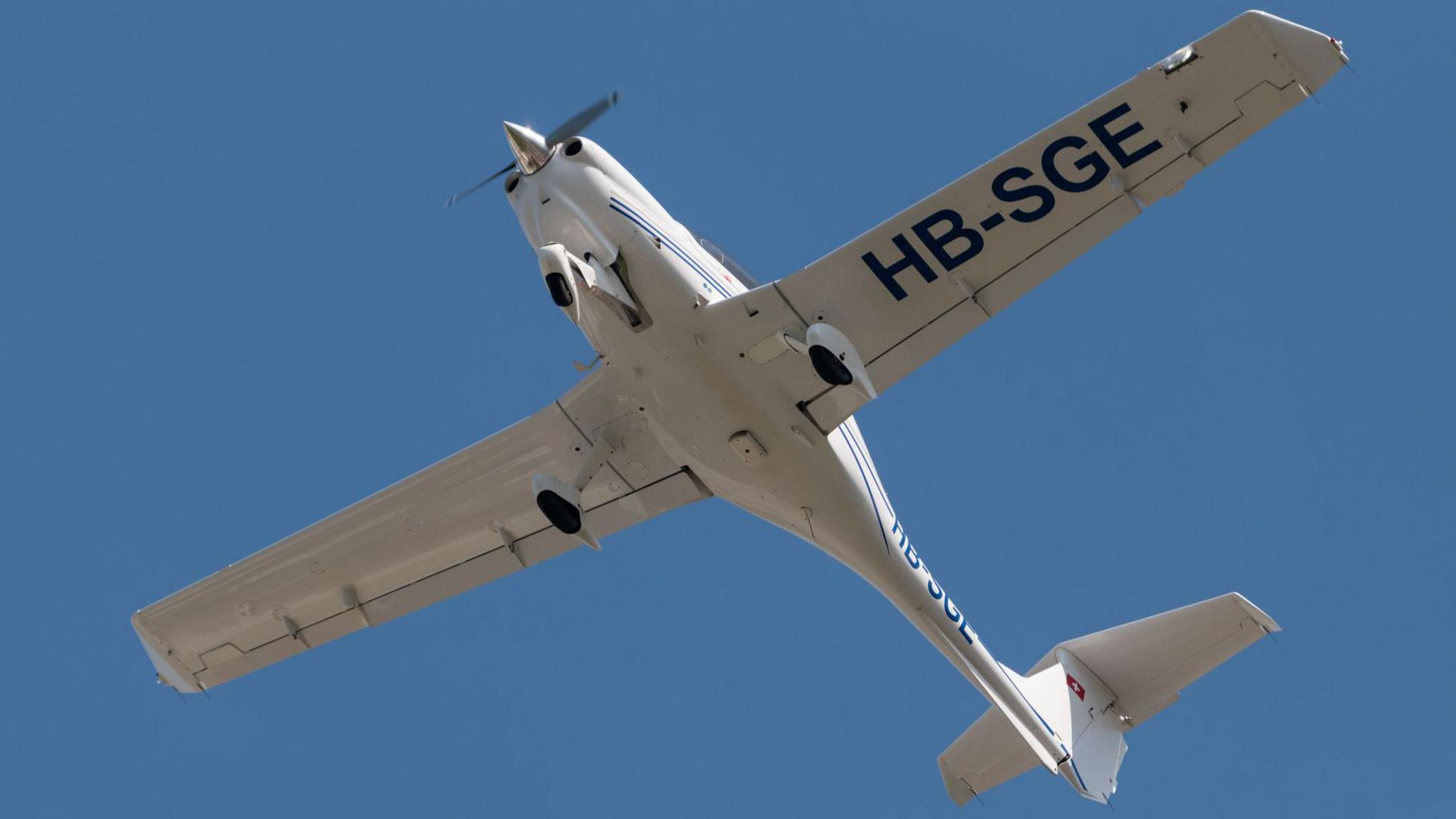
- Published5 January
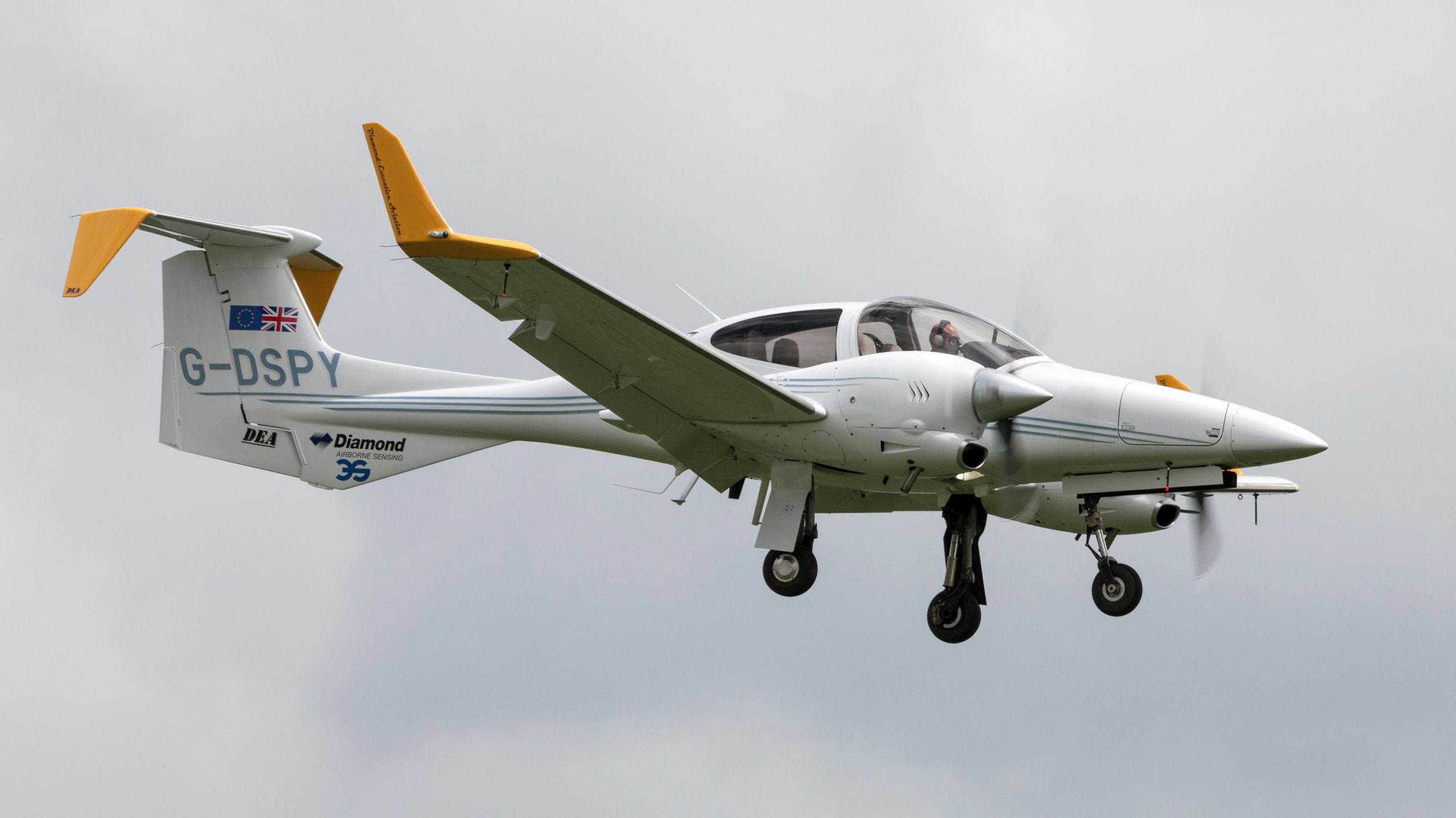
- Published14 April 2017
